Before storage, transportation and processing of harvested vegetables, the field heat should be removed quickly, and the process of rapidly cooling its temperature to the specified temperature is called precooling. Pre-cooling can prevent the increase of storage environment temperature caused by respiratory heat, thereby reducing the respiratory intensity of vegetables and reducing post-harvest losses. Different kinds and varieties of vegetables require different pre-cooling temperature conditions, and the appropriate pre-cooling methods are also different. In order to precool vegetables in time after harvest, it is best to do so in the place of origin.
The pre-cooling methods of vegetables mainly include the following:
1. Natural cooling precooling places the harvested vegetables in a cool and ventilated place, so that the natural heat dissipation of the products can achieve the purpose of cooling. This method is simple and easy to operate without any equipment. It is a relatively feasible method in places with poor conditions. However, this precooling method is restricted by the external temperature at that time, and it is impossible to reach the precooling temperature required by the product. Moreover, the precooling time is long and the effect is poor. In the north, this pre-cooling method is usually used for the storage of Chinese cabbage.
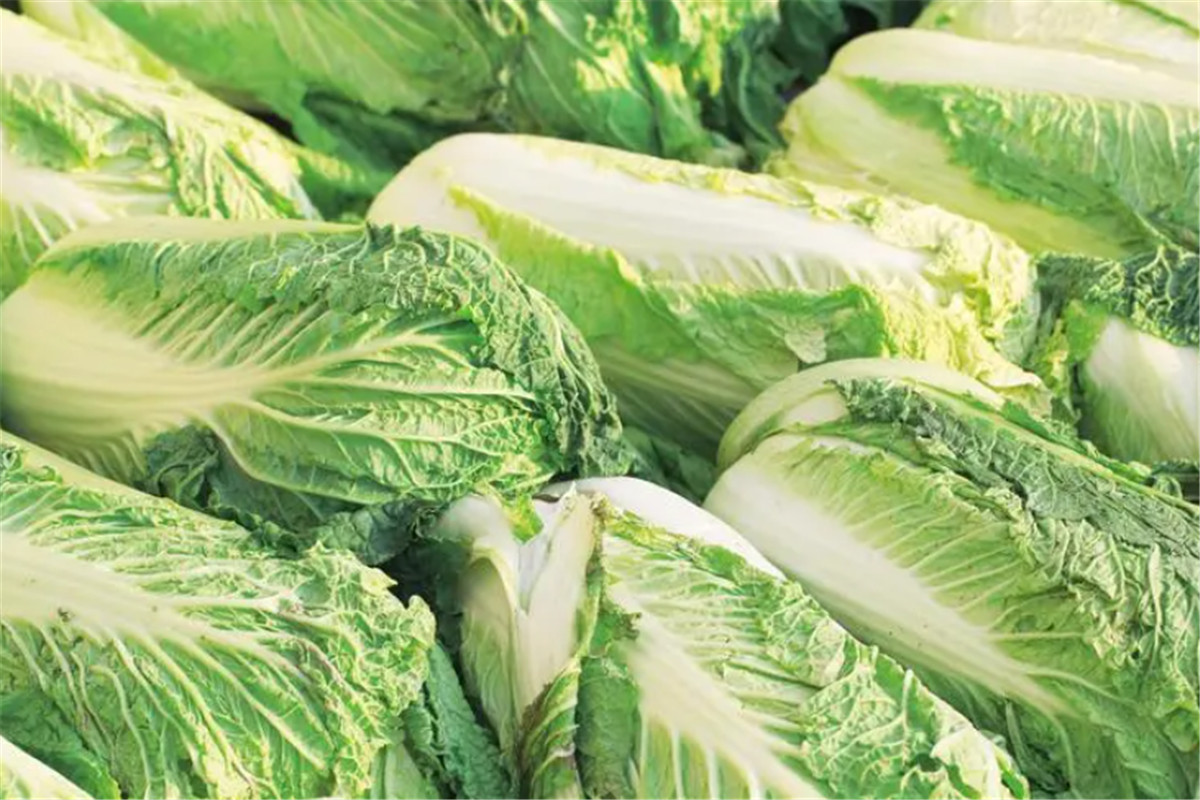
2. The cold storage precooling (Precooling Room) will stack the vegetable products packed in the packaging box in the cold storage. There should be a gap between the stacks and the same direction as the air outlet of the ventilation stack of the cold storage to ensure that the heat of the products will be taken away when the air flow passes smoothly. In order to achieve better precooling effect, the air flow rate in the warehouse should reach 1-2 meters per second, but it should not be too large to avoid excessive dehydration of fresh vegetables. This method is a common precooling method at present and can be applied to all kinds of vegetables.
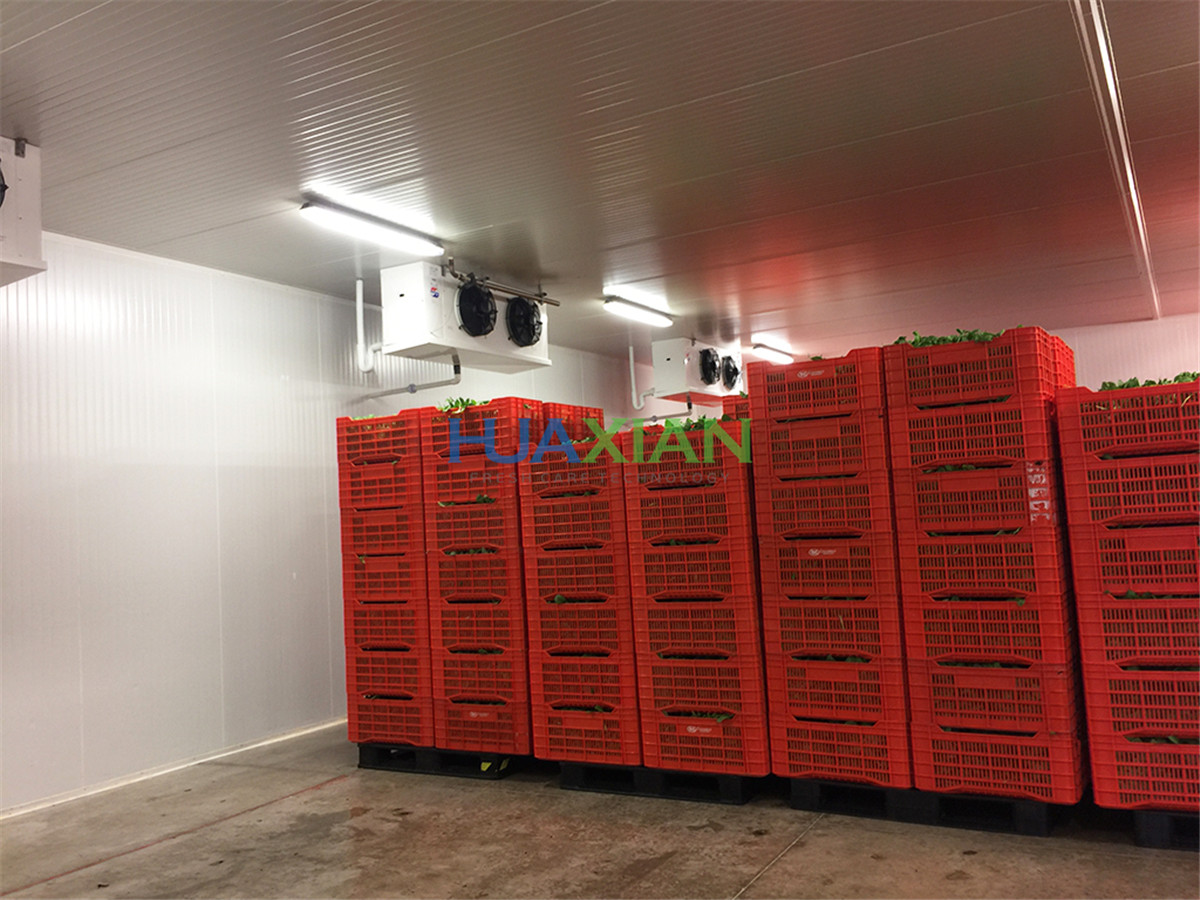
3. Forced air cooler (differential pressure cooler) is to create different pressure air flow on the two sides of the packing box stack containing products, so that the cold air is forced through each packing box and passes around each product, thus taking away the heat of the product. This method is about 4 to 10 times faster than cold storage precooling, while cold storage precooling can only make the heat of the product radiate from the surface of the packaging box. This precooling method is also applicable to most vegetables. There are many methods of forced ventilation cooling. Tunnel cooling method has been used for many years in South Africa and the United States. After years of research by scientific and technological personnel, China has designed a simple forced ventilation precooling facility.
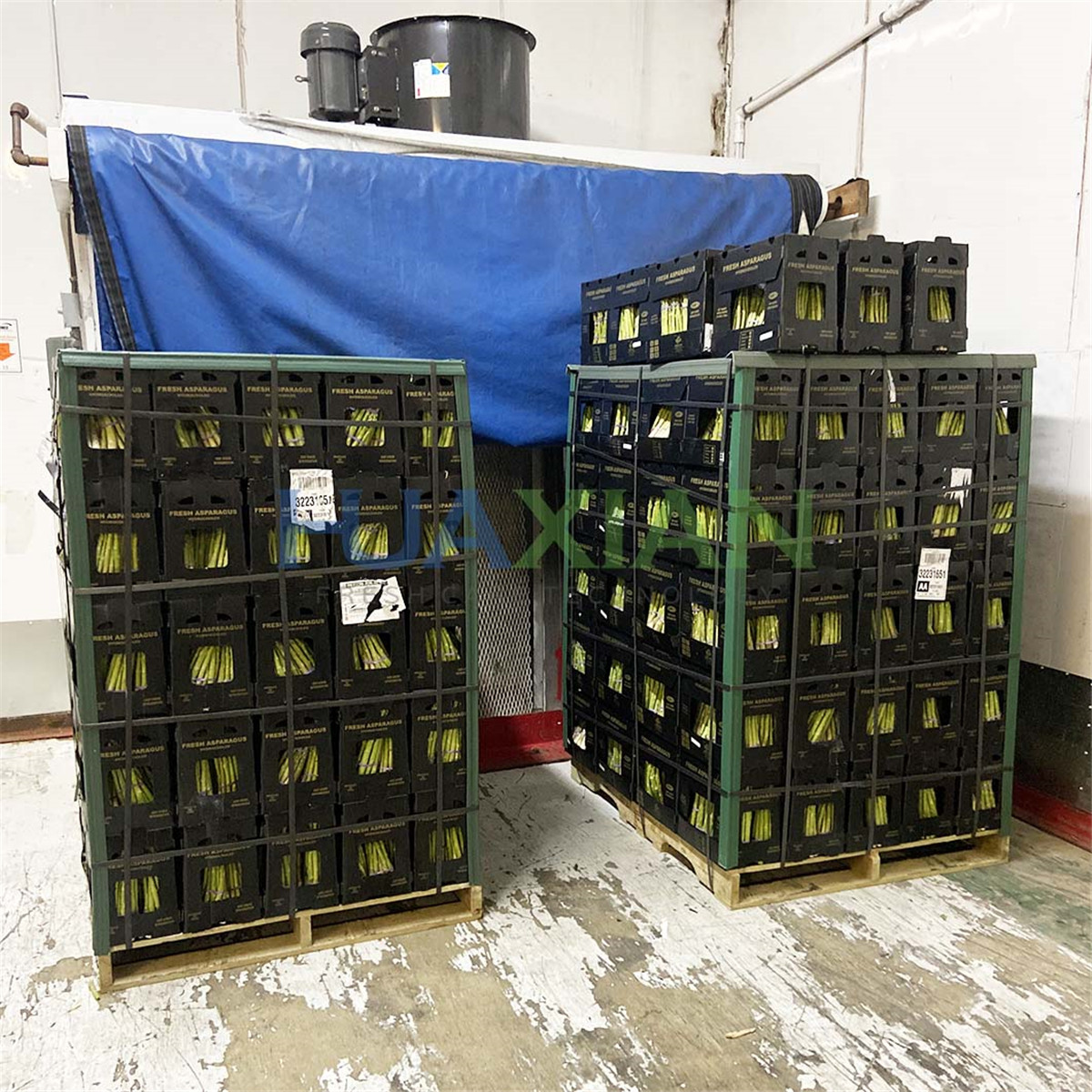
The specific method is to put the product in a box with uniform specifications and uniform ventilation holes, stack the box into a rectangular stack, leave a gap in the longitudinal direction of the stack center, cover the two ends of the stack and the top of the stack tightly with canvas or plastic film, one end of which is connected with the fan to exhaust, so that the gap in the stack center forms a depressurization zone, forcing the cold air on both sides of the uncovered canvas to enter the low-pressure zone from the ventilation hole of the package box, The heat in the product is carried out of the low-pressure area, and then discharged to the stack by the fan to achieve the effect of precooling. This method must pay attention to the reasonable stacking of packing cases and the reasonable placement of canvas and fan, so that cold air can only enter through the vent hole on the packing case, otherwise the precooling effect cannot be achieved.
4. Vacuum precooling (Vacuum Cooler) is to put vegetables in a sealed container, quickly draw out the air in the container, reduce the pressure in the container, and make the product cool due to the evaporation of surface water. At normal atmospheric pressure (101.3 kPa, 760 mm Hg *), water evaporates at 100 ℃, and when the pressure drops to 0.53 kPa, water can evaporate at 0 ℃. When the temperature drops by 5 ℃, about 1% of the product weight is evaporated. In order not to make vegetables lose too much water, spray some water before precooling. This method is applicable to precooling of leafy vegetables. In addition, such as asparagus, mushrooms, Brussels sprouts, and Dutch beans can also be pre-cooled by vacuum. The vacuum precooling method can only be implemented with special vacuum precooling device, and the investment is large. At present, this method is mainly used for precooling vegetables for export in China.
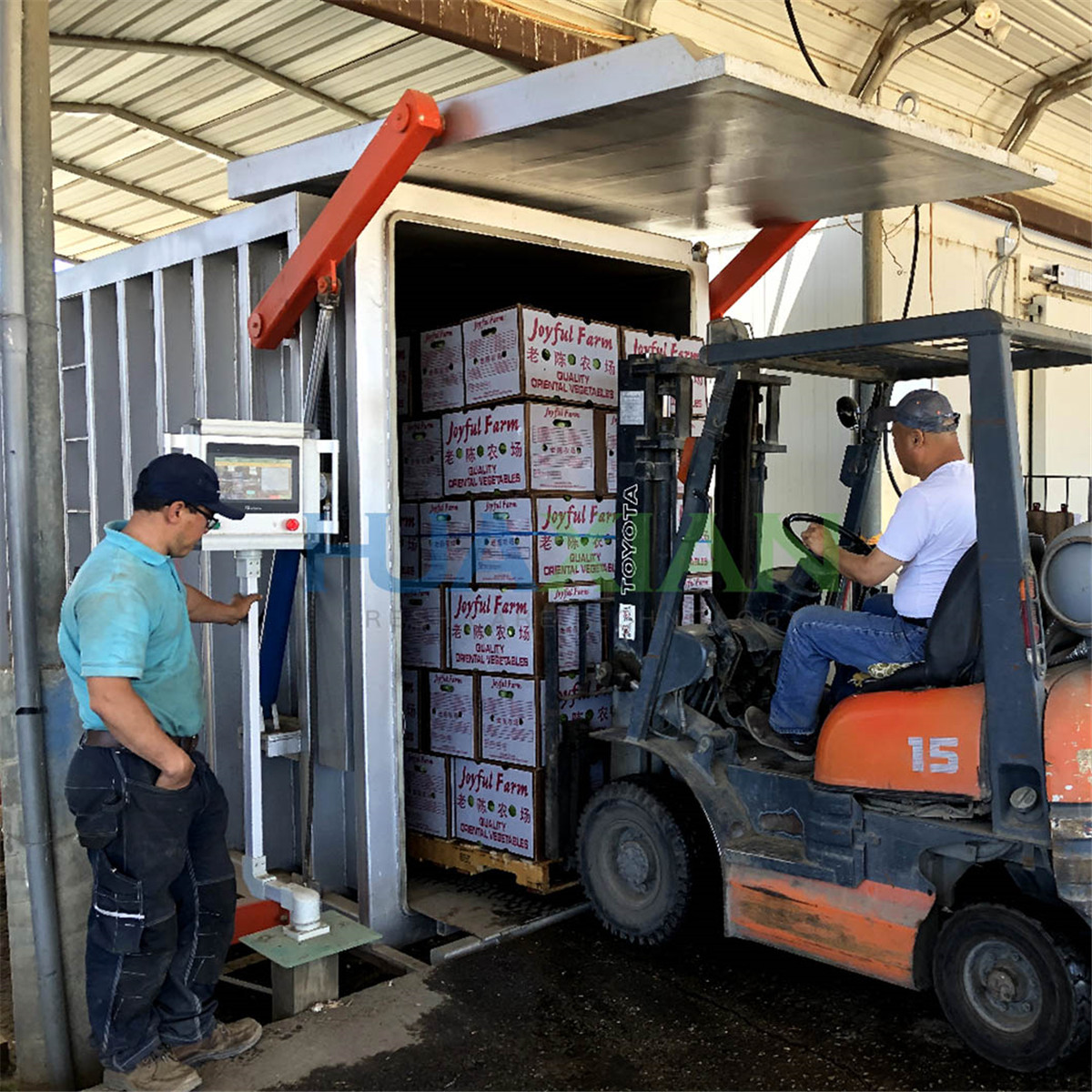
5. Cold water precooling (Hydro Cooler) is to spray cooled water (as close to 0 ℃ as possible) on vegetables, or immerse vegetables in flowing cold water to achieve the purpose of cooling vegetables. Because the heat capacity of water is much larger than that of air, the cold water precooling method using water as the heat transfer medium is faster than the ventilation precooling method, and the cooling water can be recycled. However, the cold water must be disinfected, otherwise the product will be contaminated by microorganisms. Therefore, some disinfectants should be added to the cold water.
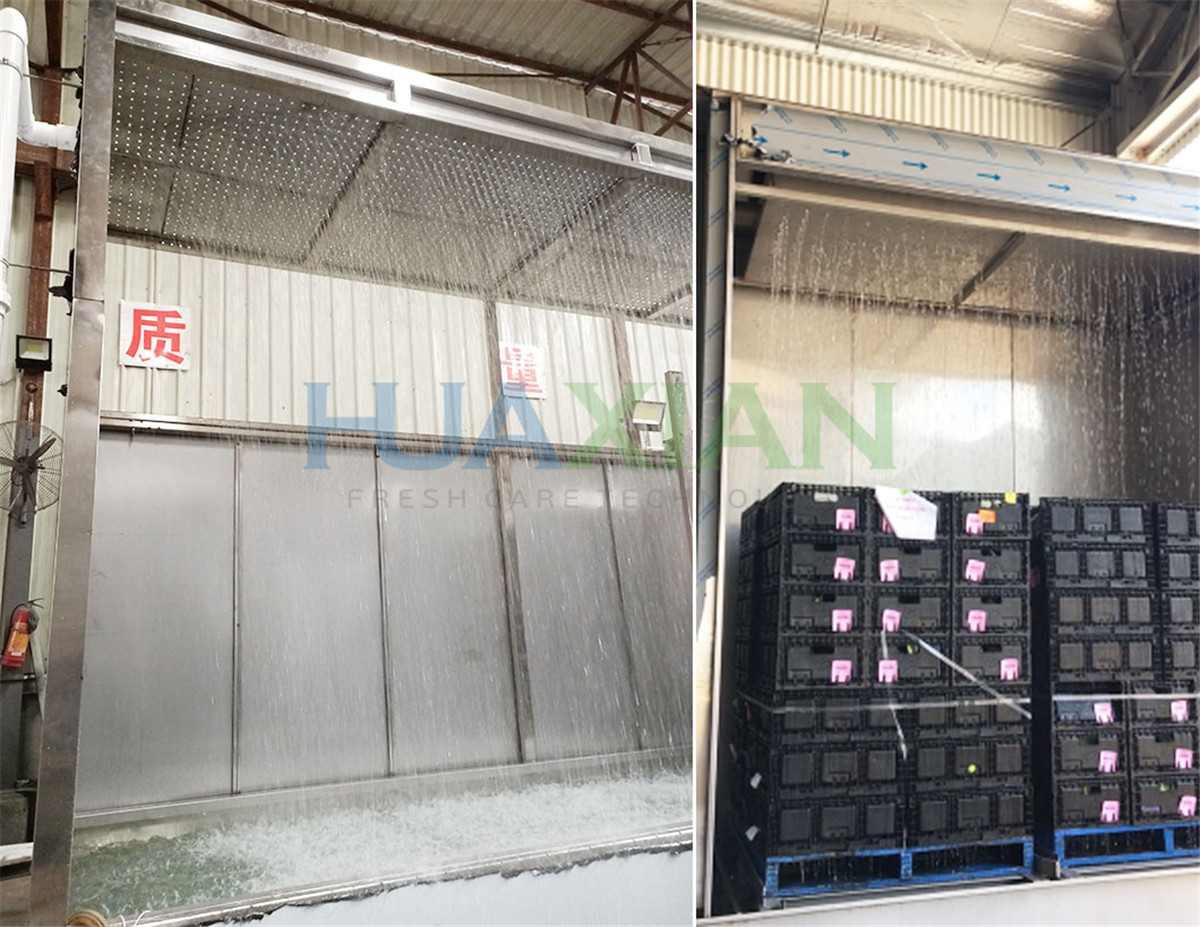
The equipment for cold water precooling method is the water chiller, which should also be cleaned with water frequently during use. The cold water precooling method can be combined with the post-harvest cleaning and disinfection of vegetables. This pre-cooling method is mostly applicable to fruit vegetables and root vegetables, but not to leaf vegetables.
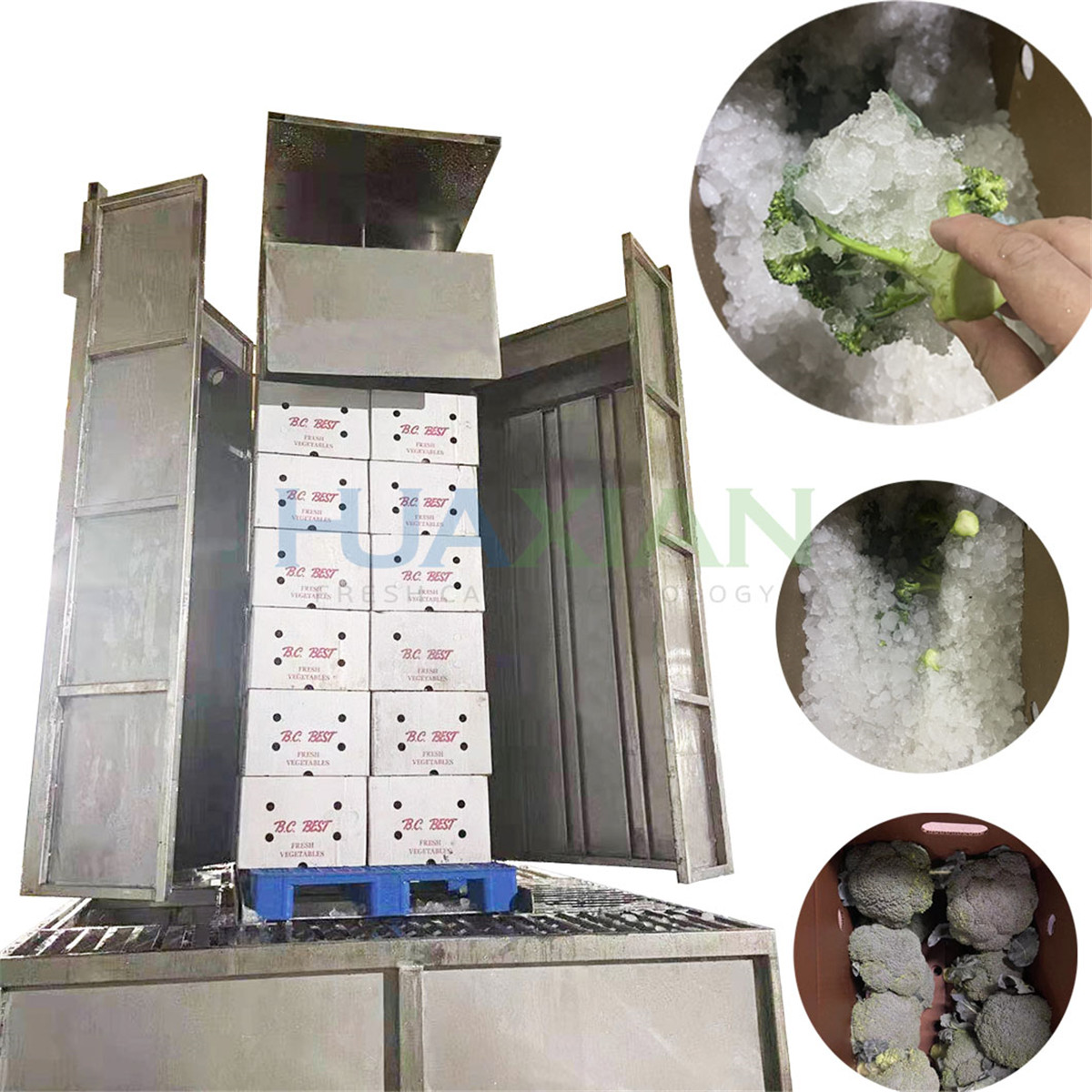
6. Contact ice pre-cooling (Ice Injector) is a supplement to other pre-cooling methods. It is to put crushed ice or mixture of ice and salt on the top of vegetable goods in the packaging container or car or train carriage. This can reduce the temperature of the product, ensure the freshness of the product during transportation, and also play a role of pre-cooling. However, this method can only be used for products that contact with ice and will not cause damage. Such as spinach, broccoli and radish.
Post time: Jun-03-2022
 Chinese
Chinese



